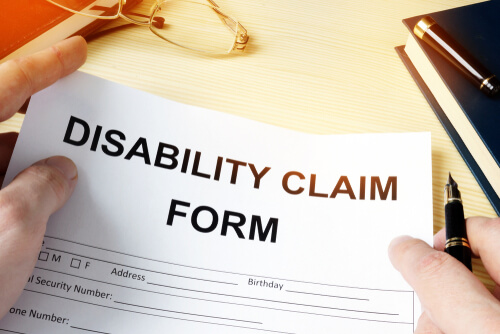Proving Pain in Disability Claims

For many of our Social Security disability clients, whatever their injury, disease, or condition is, the single most disabling symptom they have is chronic pain. People who are in constant, severe pain simply cannot work all day every day. However, actually proving that a claimant is in pain is very difficult, especially under the rules followed by the Social Security Administration. If you are suffering such chronic pain, this article will provide some helpful information to you.
How to Prove Chronic Pain at an SSD Hearing
The Administrative Law Judge (ALJ) at your Social Security disability hearing will consider the pain you experience, and its effect on your ability to do basic work activities, but only after you first establish by “objective medical evidence” that you suffer from a medically determinable physical or mental impairments that could reasonably be expected to produce pain. In other words, it is not enough to say “My back hurts.” There must be evidence in the record demonstrating a cause of the pain.
For example, a bulging disc shown by CAT Scan or MRI is considered to be objective evidence of a physical condition reasonably expected to cause pain. Once this relationship is established, the intensity, persistence, and limiting effects of your pain must be considered in determining whether your impairments is severe. In addition, as mentioned previously, the judge at your hearing will consider all your symptoms (including pain) in determining your residual functional capacity (RFC). RFC, in simple terms, is the most activity you can still do after considering the effects of physical and/or mental limitations that affect your ability to perform work-related tasks. Pain will often be severe enough that it impacts a person’s ability to maintain attention and concentration.
Evidence to Prove Chronic Pain
The ALJ will make a determination of the credibility of your statements concerning your pain and its functional effects. In determining the credibility of your statements, the judge will consider medical evidence as well as your testimony about pain. The judge is looking to see that your functional limitations and restrictions due to pain are consistent with the other evidence in the case record including the objective medical evidence.
Most importantly, a continuous medical record documenting your attempts to seek medical treatment for pain, and to follow the prescribed treatment, lends support to your allegations of persistent pain. In other words, go to the doctor, and take your medication! We realize that while applying for disability benefits and/or SSI, your money may be tight, and you may lack adequate health insurance.
However, many cities offer health care services for free or for a nominal fee. In Dallas, for example, Parkland Hospital offers services for patients who lack adequate income and resources. Our law firm maintains contact information for various other clinics that offer indigent services. Please contact us to determine if there is a free or inexpensive clinic in your area.
What to Expect at a Disability Hearing
At your hearing, the judge will likely ask you where you experience pain and how you would describe it. Pain is often hard to describe, but you should do your best to relate your pain as specifically as possible to the judge. This would include telling the judge what type of pain you experience (burning, stabbing, etc.), how often you experience it, and how you would quantify it (for example, on a scale of 1 to 10).
By following these suggestions, you will have a much better chance of getting the ALJ to seriously consider your chronic pain in making a determination of disability in your claim.
